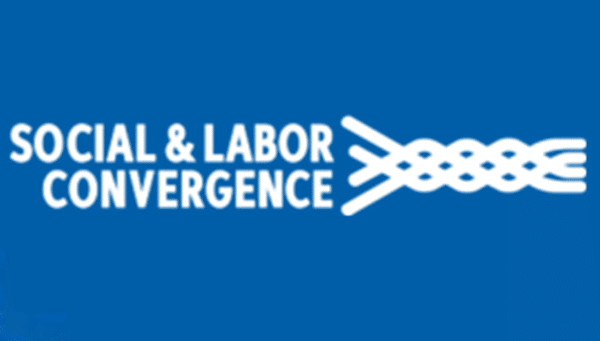What is SLCP Factory Inspection? What are the main contents and audit process of SLCP factory inspection? What does SLCP inspection have to do with HIGG FSLM? In this post, we will take you to understand those things about SLCP.

Introduction To SLCP Factory Inspection
The full name of SLCP is the Social and Labor Convergence Project, a social labor integration project facilitated by the Sustainable Apparel Coalition (SAC), and the first signatories include Nike, Adidas, Target, standards-holding organization WRAP, and Sedex, a non-profit team of supply chain improvement experts. SLCP itself is only an industry standard, SLCP does not develop its own IT platform, using other institutions’ IT platforms for verification, currently SLCP has three hosting platforms, namely AH (AccreditedHost, accredited hosting platform), which are FFC/SEDEX/SAC HIGG.
Since 2018, SAC has replaced its own tool, the Higg Factory Social and Labor Module (FSLM), with SLCP’s ConvergedAssessment Framework (CAF), as the backbone of the updated Higg FSLM, and SLCP issues have been integrated into the updated Higg FSLM, which enables the verification methodology developed by SLCP. Therefore, if the customer needs SLCP factory inspection, it can be achieved through Higg FSLM verification. One of SLCP’s philosophies is to reduce duplication of audits in the industry through a unified program, including labor, health and safety.
Data on the SLCP platform is confidential and it is up to the facility to decide whether to share SLCP-validated evaluation data with an accredited hosting platform. The biggest advantage of SLCP is information sharing, many brand parties have become SLCP contracting parties, using the same standard, reducing repeated factory inspections and audits, and information is easy to share.
Main Contents Of SLCP Factory Inspection
SLCP factory inspection has nine verification items:
- Recruitment and employment: child labor/forced labor/discrimination/employment practices
- Working hours: normal hours/overtime
- Salary and benefits: salary income/welfare benefits
- Treatment of employees: forced labor/discipline/harassment/abuse
- Employee participation: freedom of association/collective bargaining/grievance mechanisms/employee feedback
- Health and safety: wage environment / emergency preparedness / building safety / production safety
- Employment Relationship: Forced Labor/Discrimination/Employment Practices
- Management system: regular shift hours/overtime hours
- Employee Well-being: Worker Well-being/Community Impact
SLCP Self-Evaluation and Third-Party Verification Results
Whether it is SLCP/Higg FSLM or Higg FEM, they are just an industry standard, a measurement tool, not a traditional audit, no PASS, FAIL, but just verification. The SLCP verification result is the ratio of the factory’s self-assessment results to the third-party company’s actual verification results, so the final SLCP verification results show two percentages: the percentage of completion and the percentage of accuracy.
In general, the higher the ratio of these two ratios, the better, but the higher the percentage obtained, does not indicate better performance of the verified factory, but only reflects the higher transparency of the factory.
Different customers have different requirements for the problems found in the actual verification, for example, some will require continuous improvement, and some will require improvement plans and follow-up on the spot.
Factories that have completed verification will receive a certificate of complete verification. State when the facility completed validation and how long it is valid. On a separate official report, the two final verification parameters mentioned earlier are displayed: the completion of the self-assessment and the percentage of accuracy of the self-assessment.
SLCP Factory Inspection/Higg FSLM Verification Process
- 1. Visit Higg’s official website and fill in the factory information;
- 2. Purchase the FSLM factory labor self-assessment module and fill in, the assessment content is more, it is recommended to consult a professional third party before filling in;
- 3. Upload the FSLM self-assessment form, and customers can understand the FSLM self-assessment of the enterprise through Higg;
- If the customer does not ask for on-site verification, it is basically over; If factory on-site verification is required, you need to continue with the following steps;
- 4. Visit Higg’s official website and purchase the vFSLM verification module;
- 5. Contact a suitable third-party testing agency, inquire, pay, and agree on the inspection date;
- 6. Determine the verification body on the Higg system;
- 7. Arrange on-site verification and upload the verification report to Higg’s official website;
- 8. The customer checks the actual situation of the factory through the system report.
SLCP Factory Inspection Mainly Involves The Following Costs
SLCP Factory Inspection/Higg FSLM Verification requires the purchase of two modules:
Module 1: FSLM self-assessment module
Whenever requested by the customer, regardless of whether on-site verification is required, the factory must purchase the FSLM self-assessment module.
Module 2: vFSLM verification module
If the customer requires the facility to undergo on-site validation of the Higg FSLM environment, the facility must purchase a vFSLM validation module.
SLCP Factory Inspection Precautions
- 1. SLCP verification data can be shared from one AH to another AH (i.e. hosting platform), after the end of SLCP verification, the factory can share the verification data with customers using the same AH or other AHs at any AH.
- 2. To operate SLCP on the platform, you must associate SLCPGateway for subsequent operations, if it is not linked, it cannot be verified and cannot be shared. If the customer asks the factory to do SLCP, the factory can purchase and complete FSLM directly on HIGG, and it needs to be associated with SLCPGateway.
- 3. SLCP/FSLM checkpoints are about 3000 points, according to experience, a factory to complete a self-assessment takes about 2-3 weeks, suppliers in the completion of the customer requirements of the self-assessment remember to leave enough time to ensure that the customer requirements before the completion of the self-assessment.
- 4. SLCP factory inspection recommends finding a suitable third-party inspection agency from the self-assessment stage, that is, before verification, to assist in completing the self-assessment test and subsequent factory inspection verification stage, so as to avoid low self-rating number and affect the effect of factory information sharing.